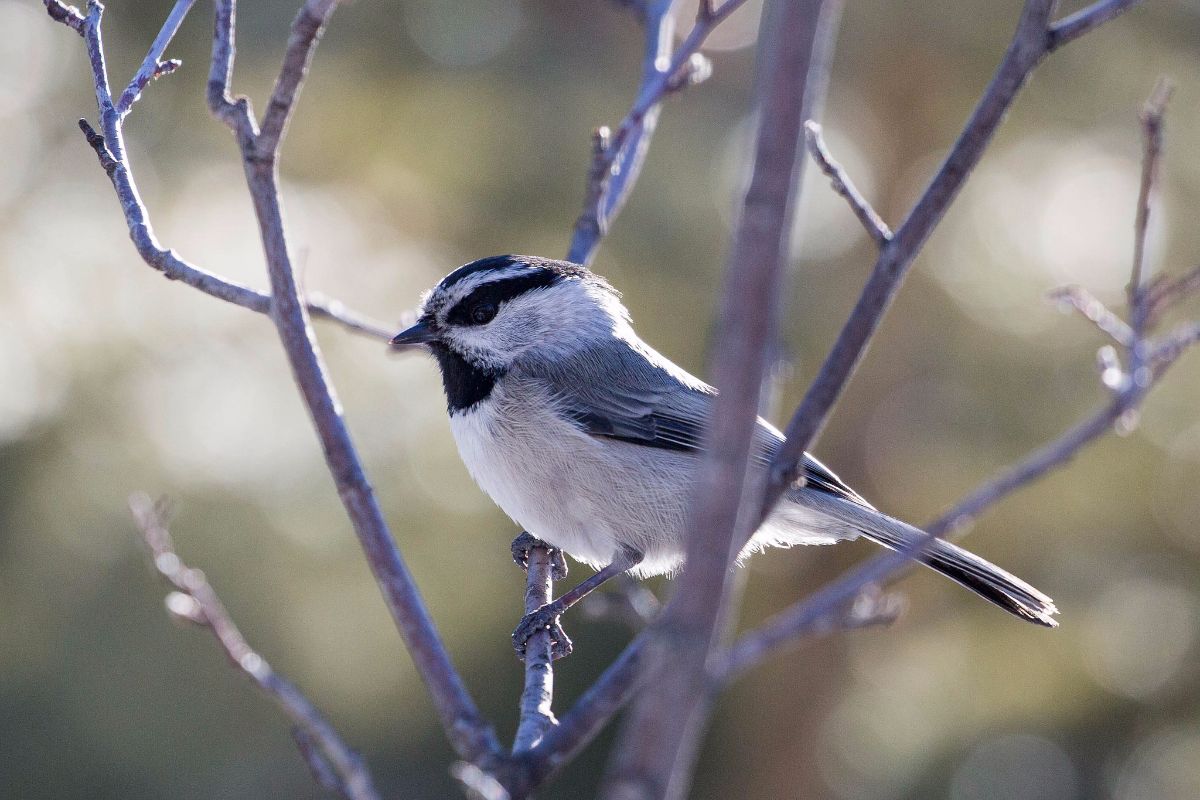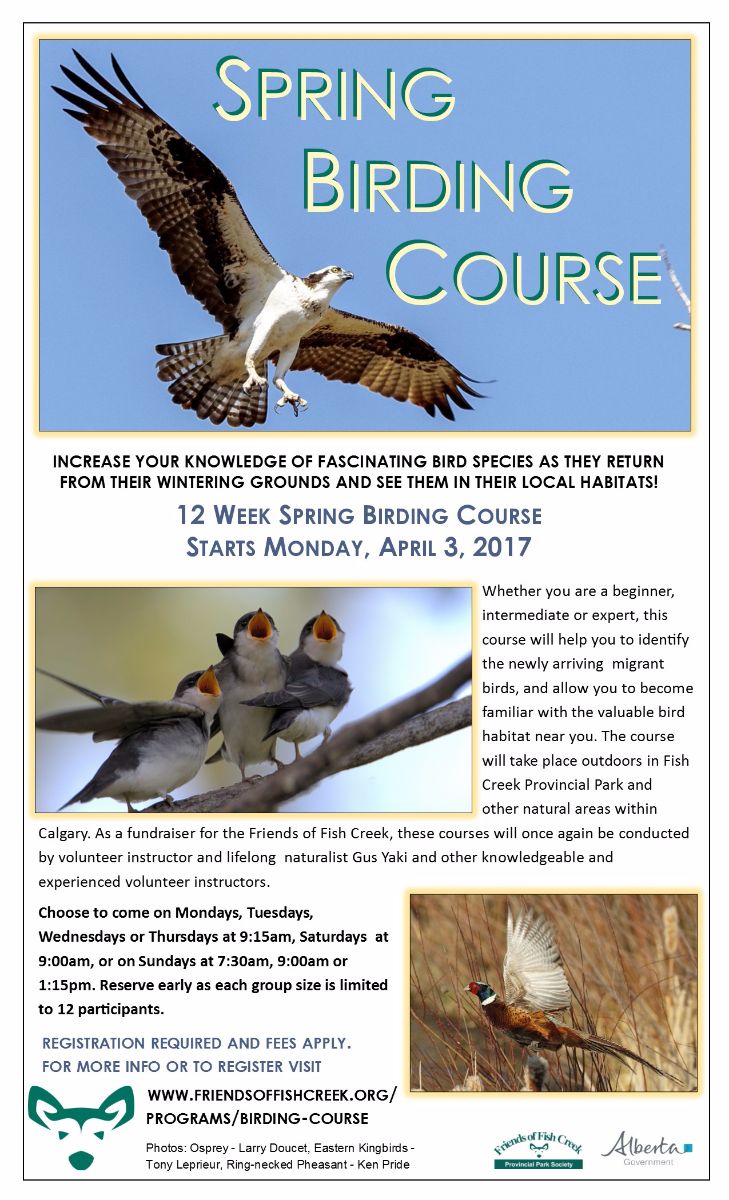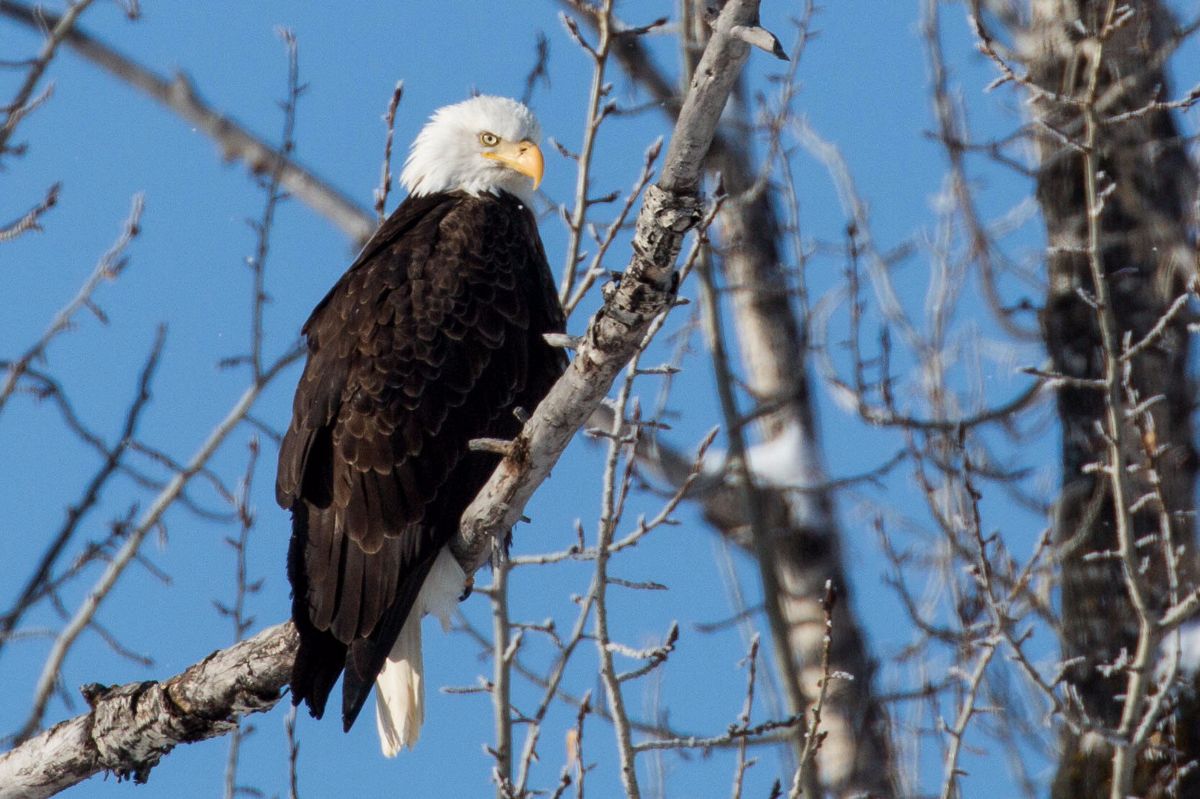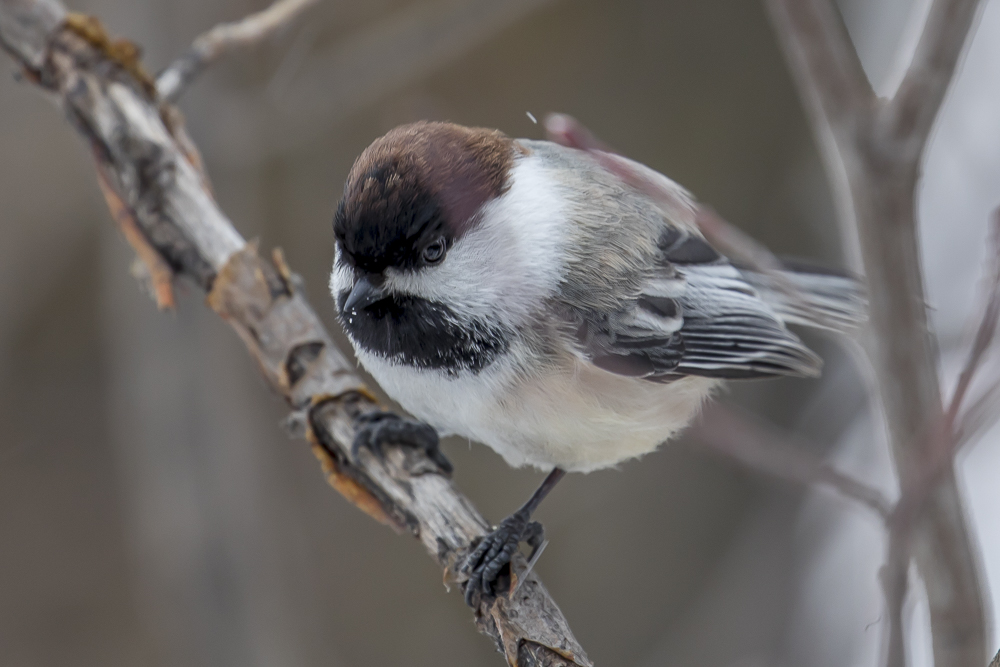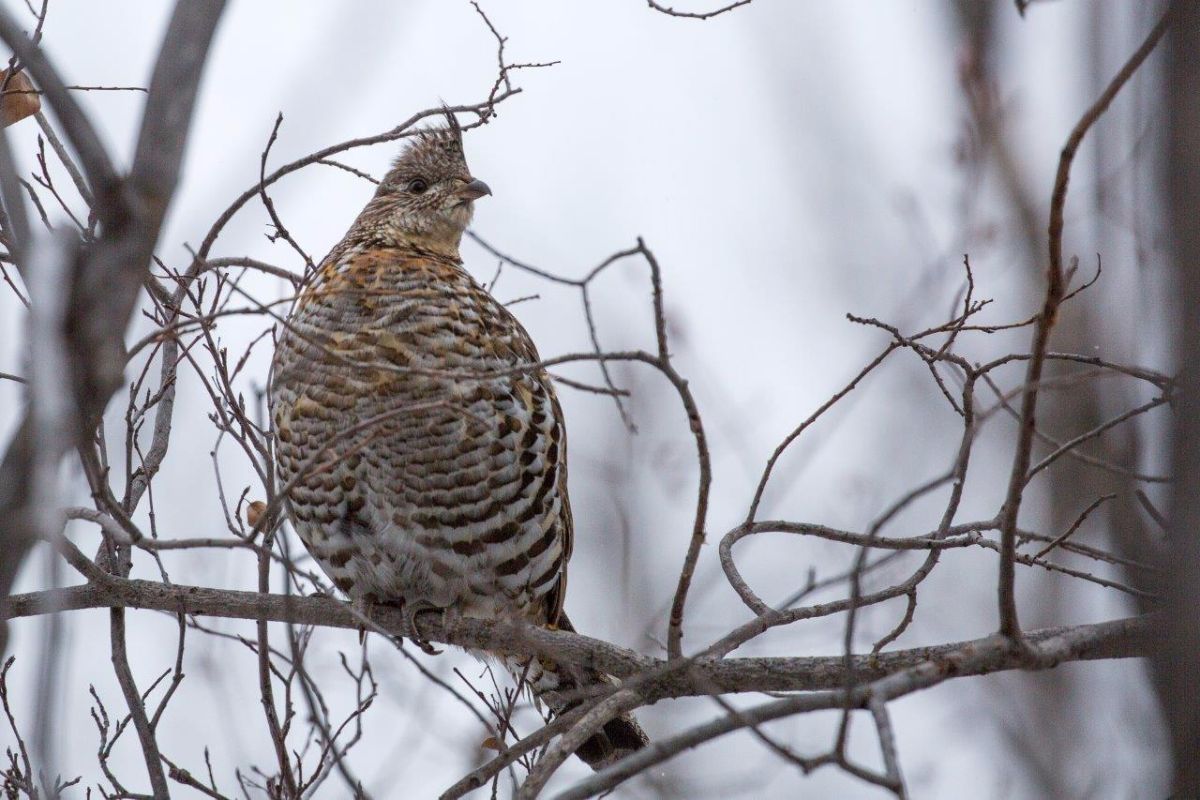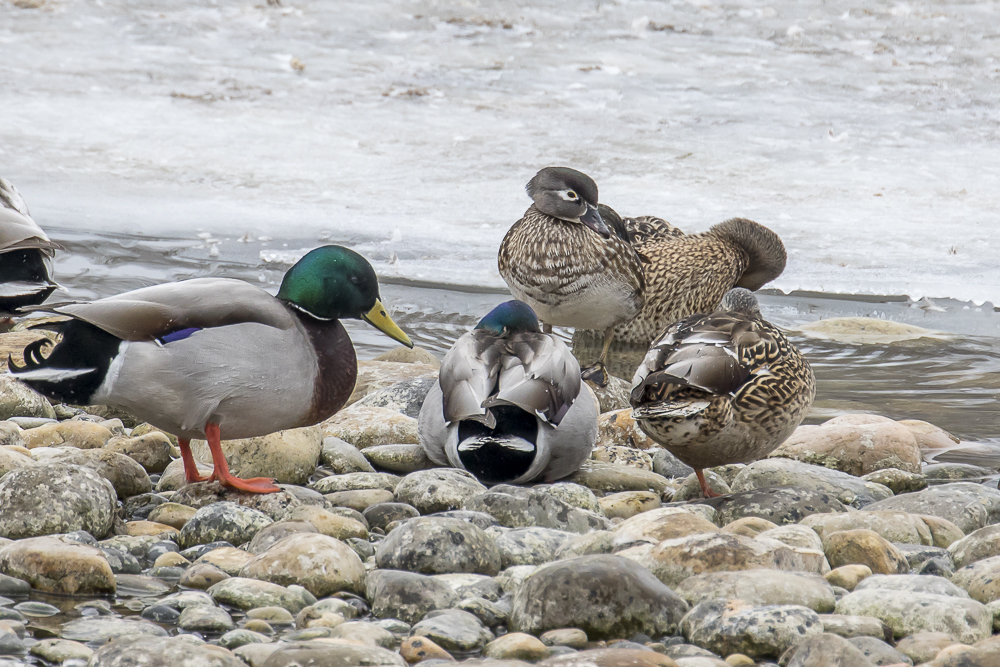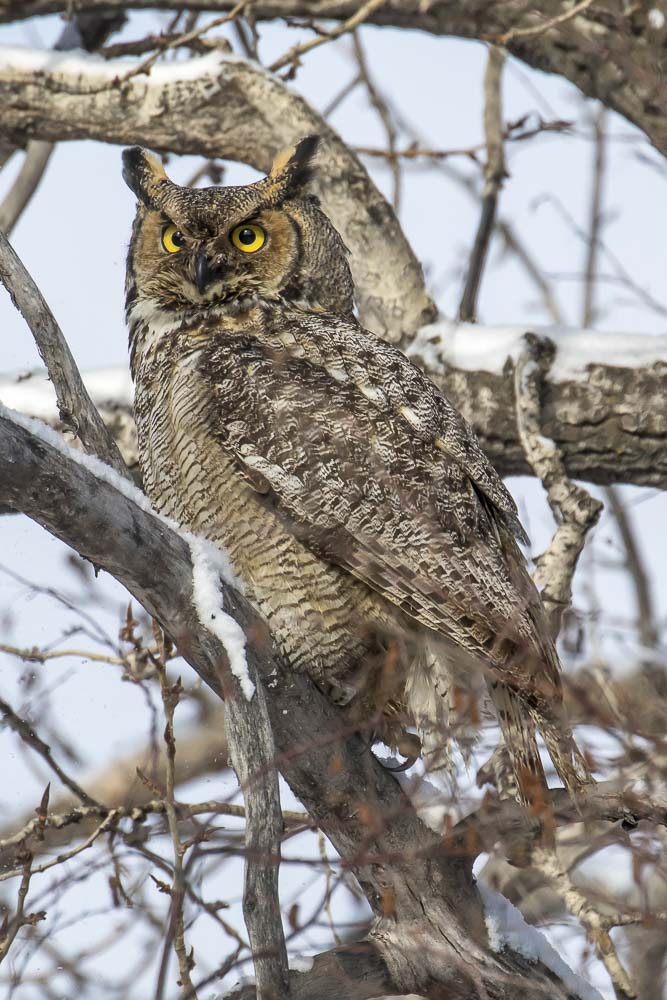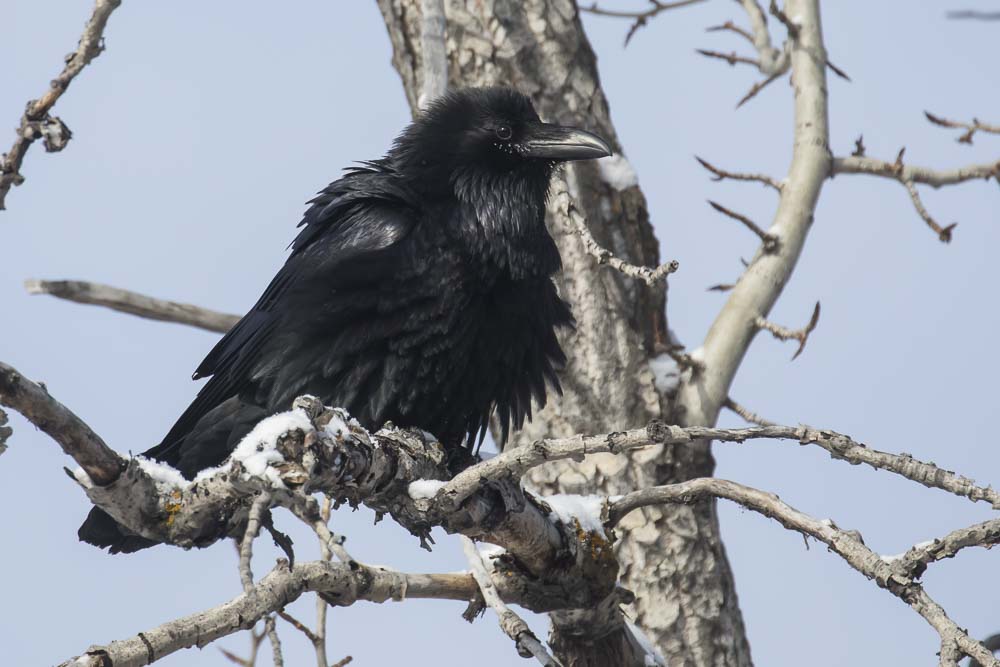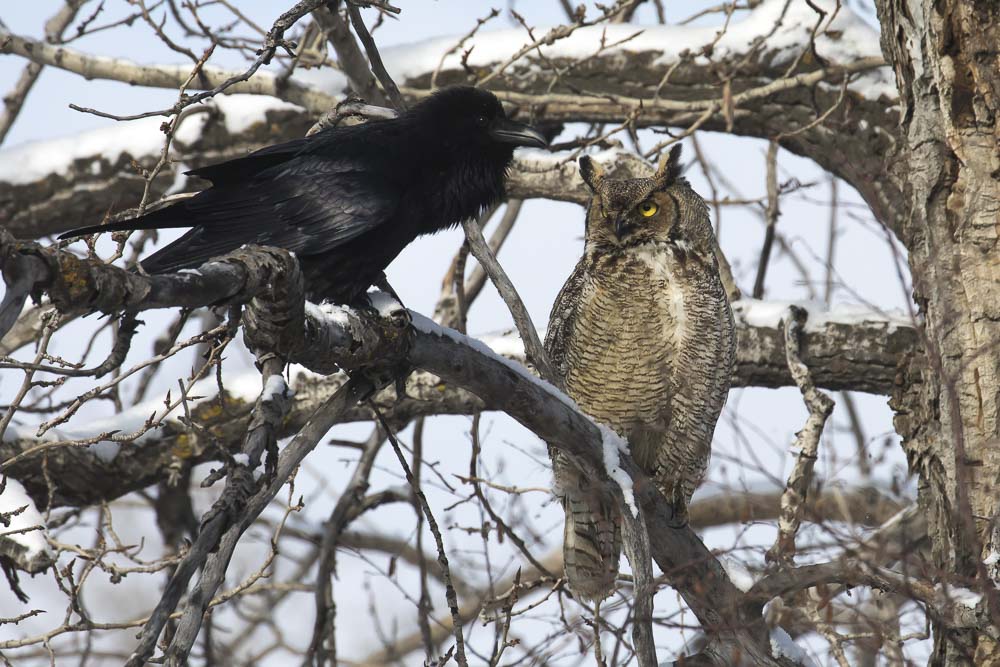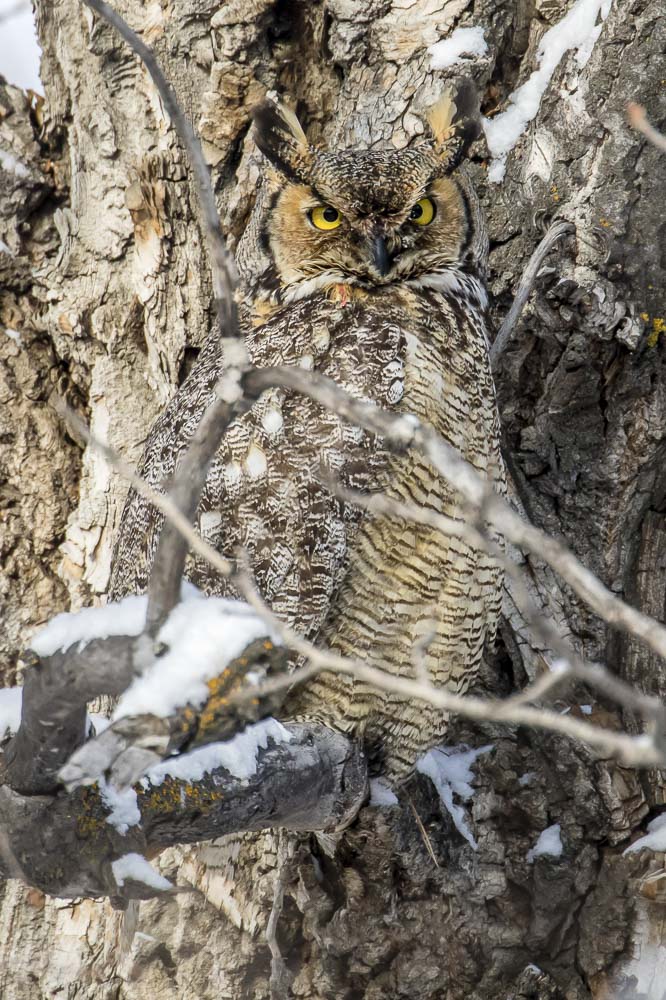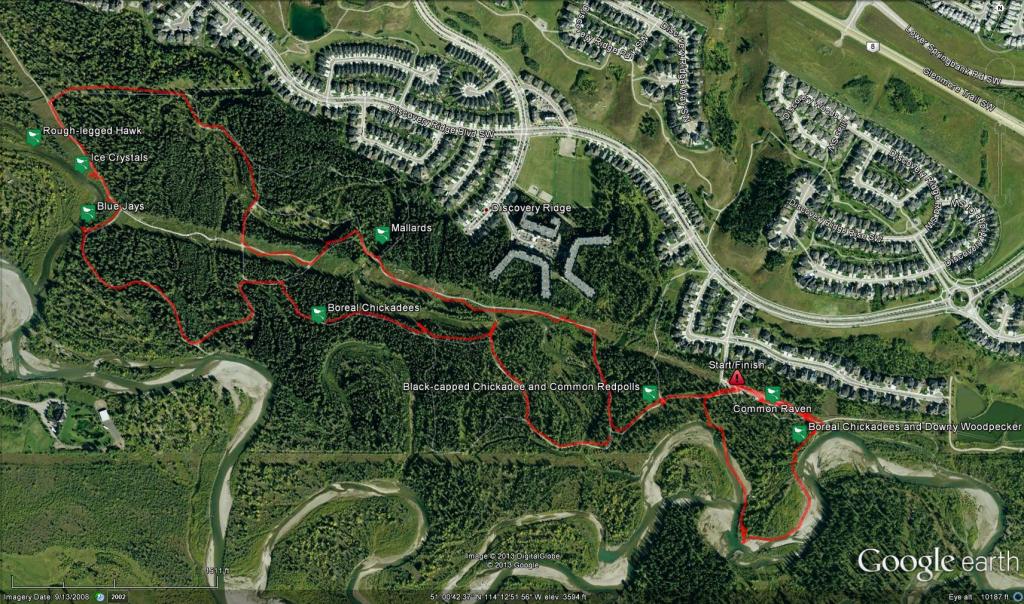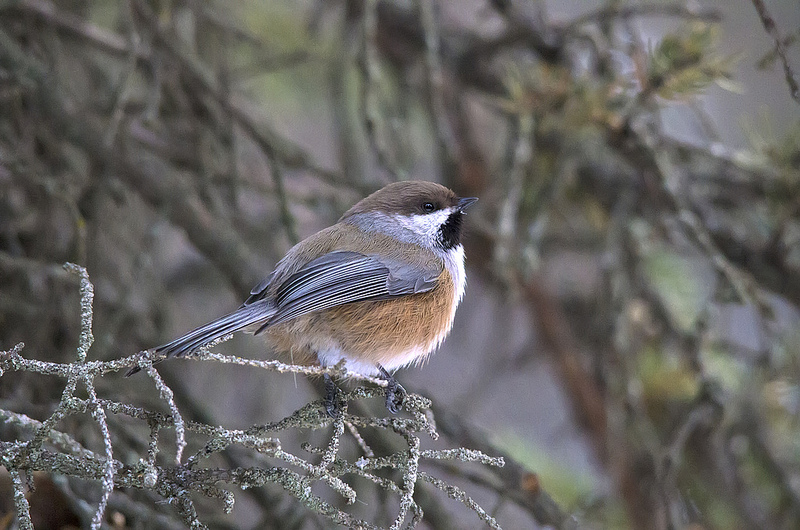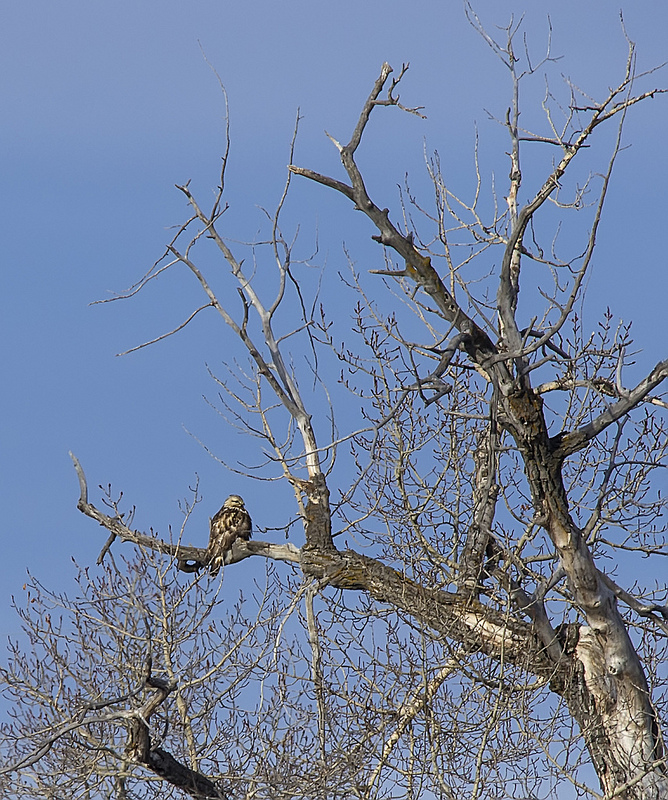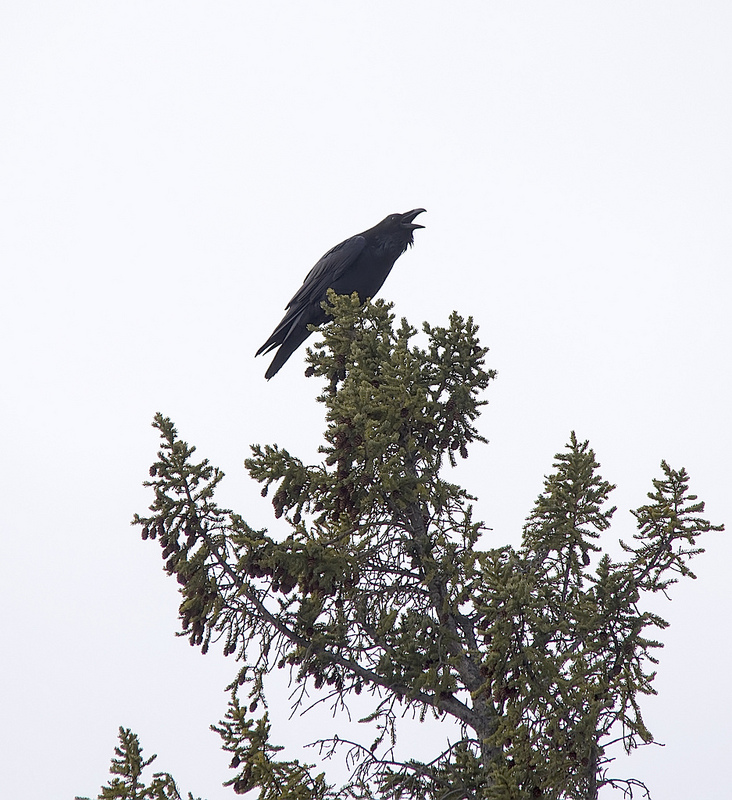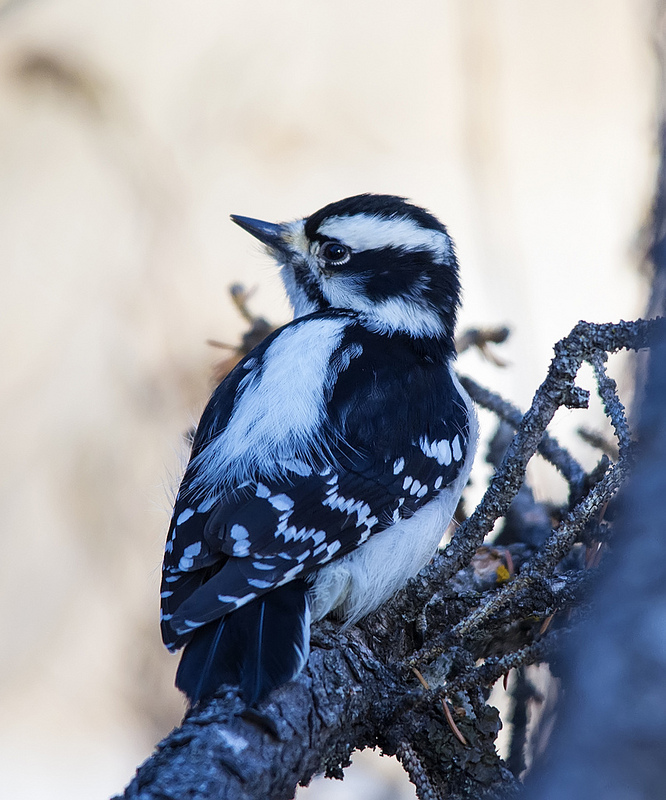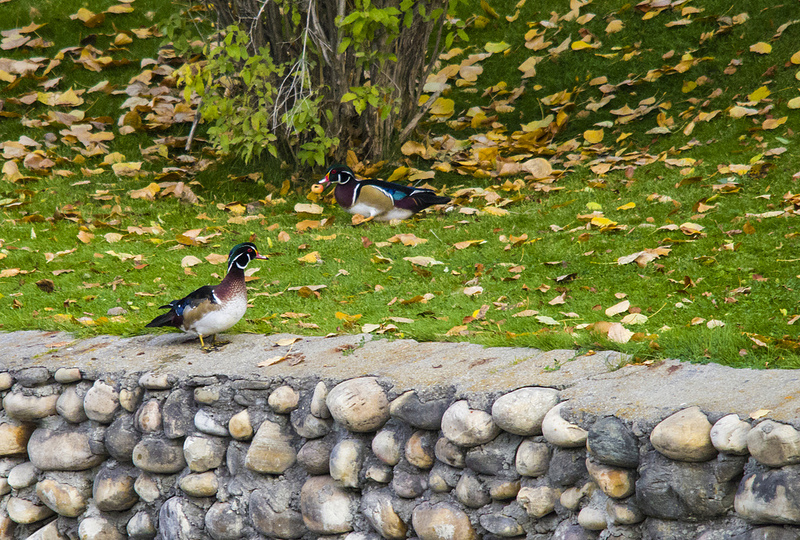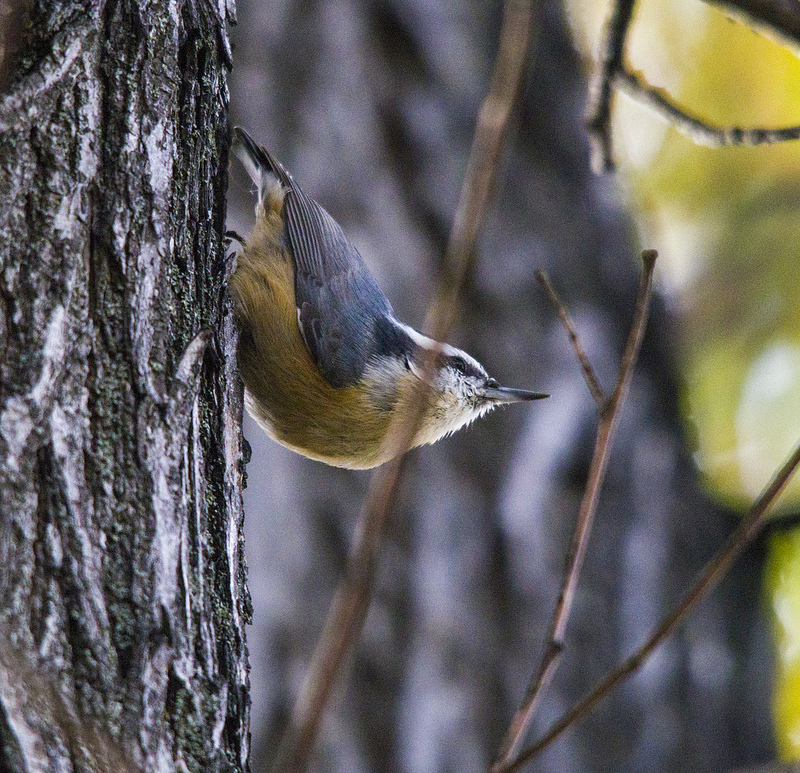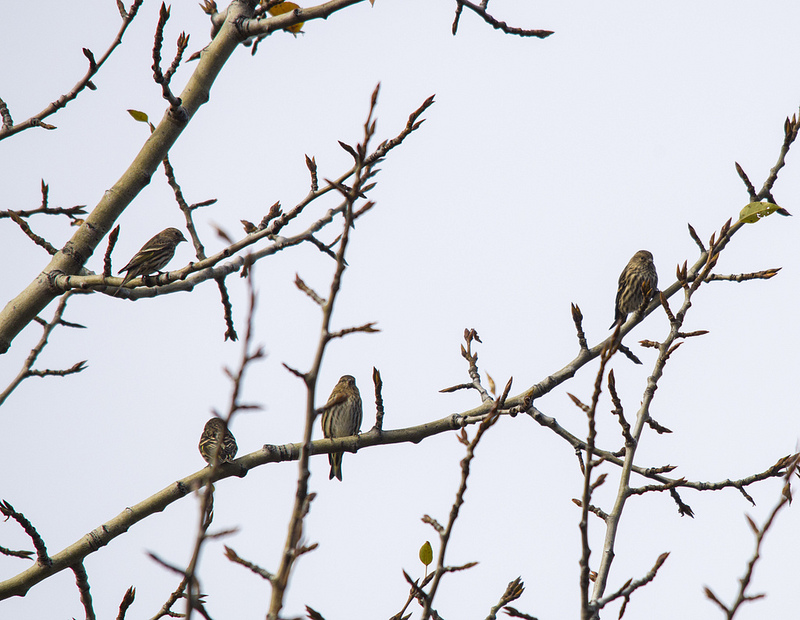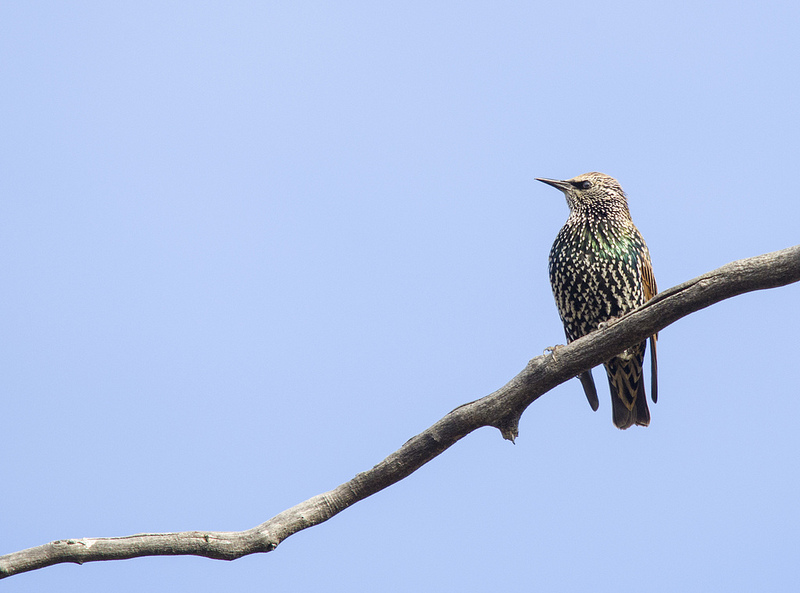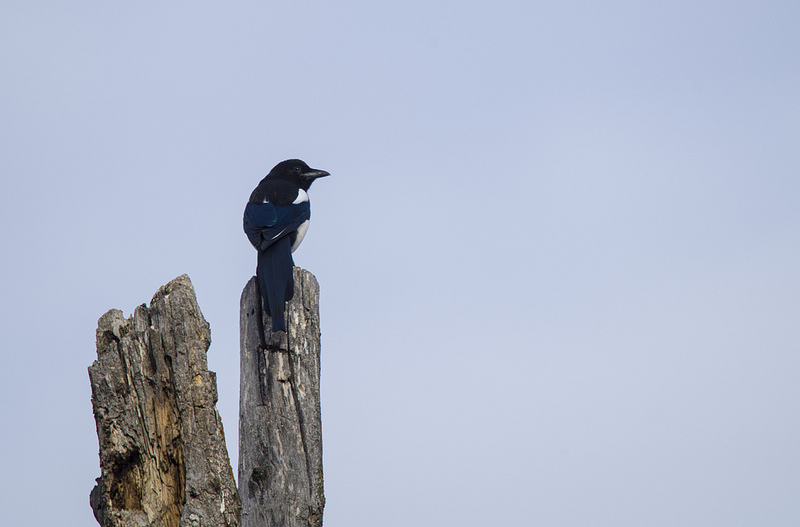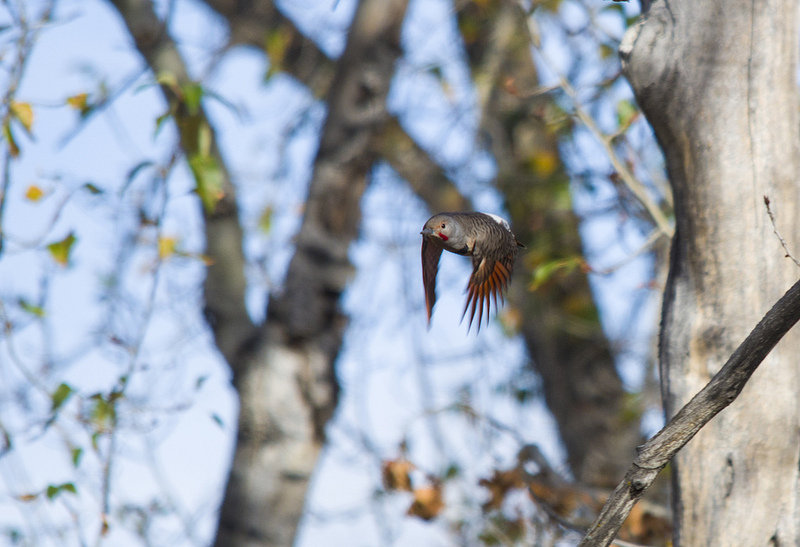Posted by Dan Arndt
As I wrote in my original post about Griffith Woods with the Winter Birding course, I haven’t had much opportunity to visit this beautiful park on the edge of the city, and Sunday morning was only my second visit. The route we took this week was almost identical to the one we took in March, but the birds we saw were vastly different.
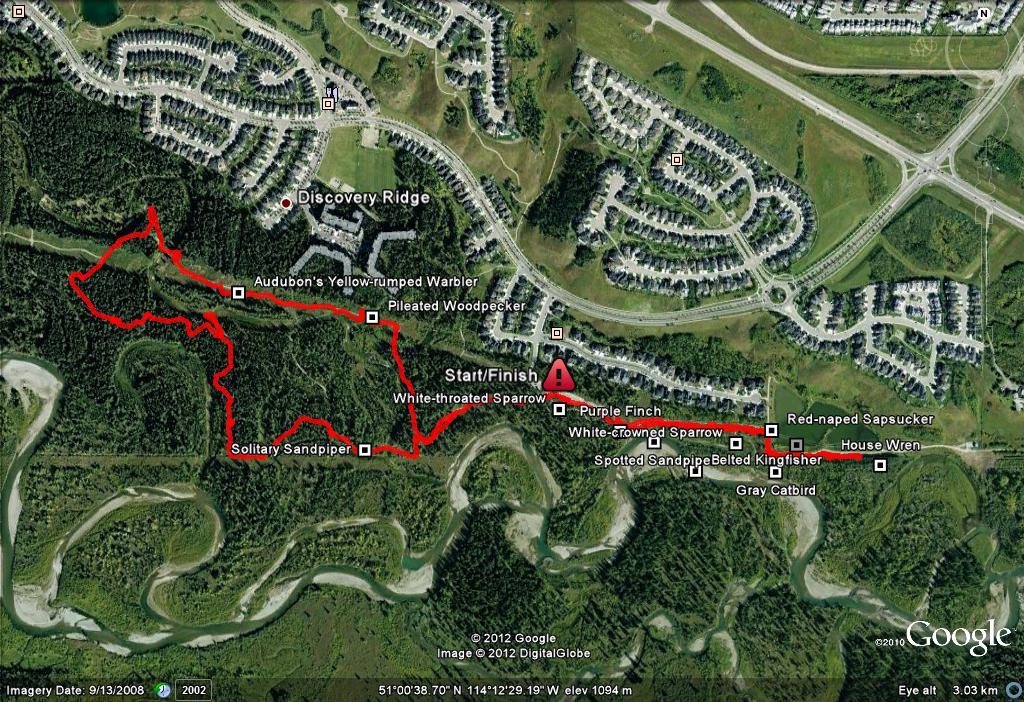
Griffith Woods – 5km Walking Route
We started by walking east from the parking lot, where we were inundated by a huge number of birds singing. Not only new birds for the year for many of us, but for myself at least one new life bird, and great views of others that I’d only seen in the distance or through foliage. Both White-crowned and White-throated Sparrow species were present and singing, but we also heard and saw a single male Purple Finch.
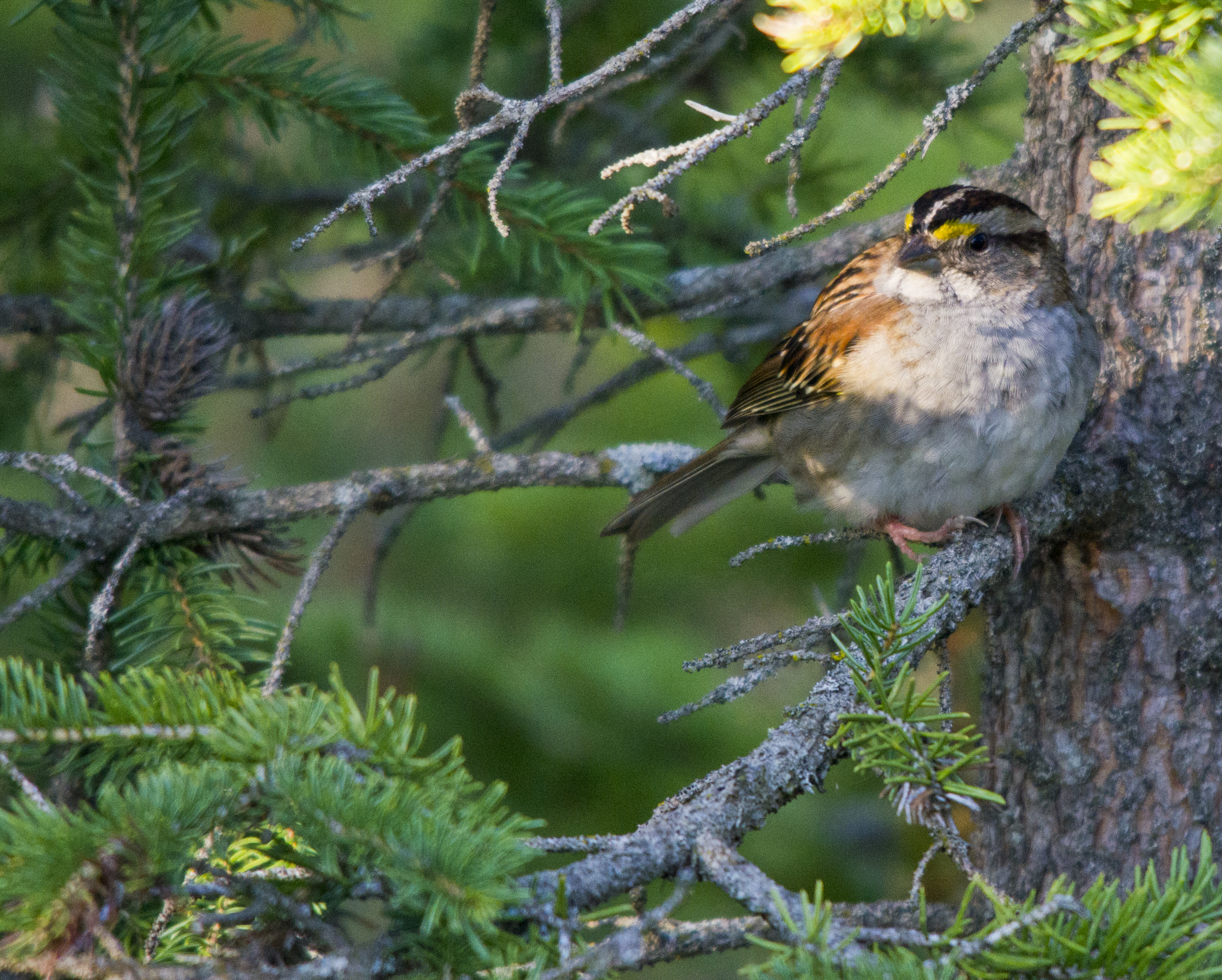
White-throated Sparrow
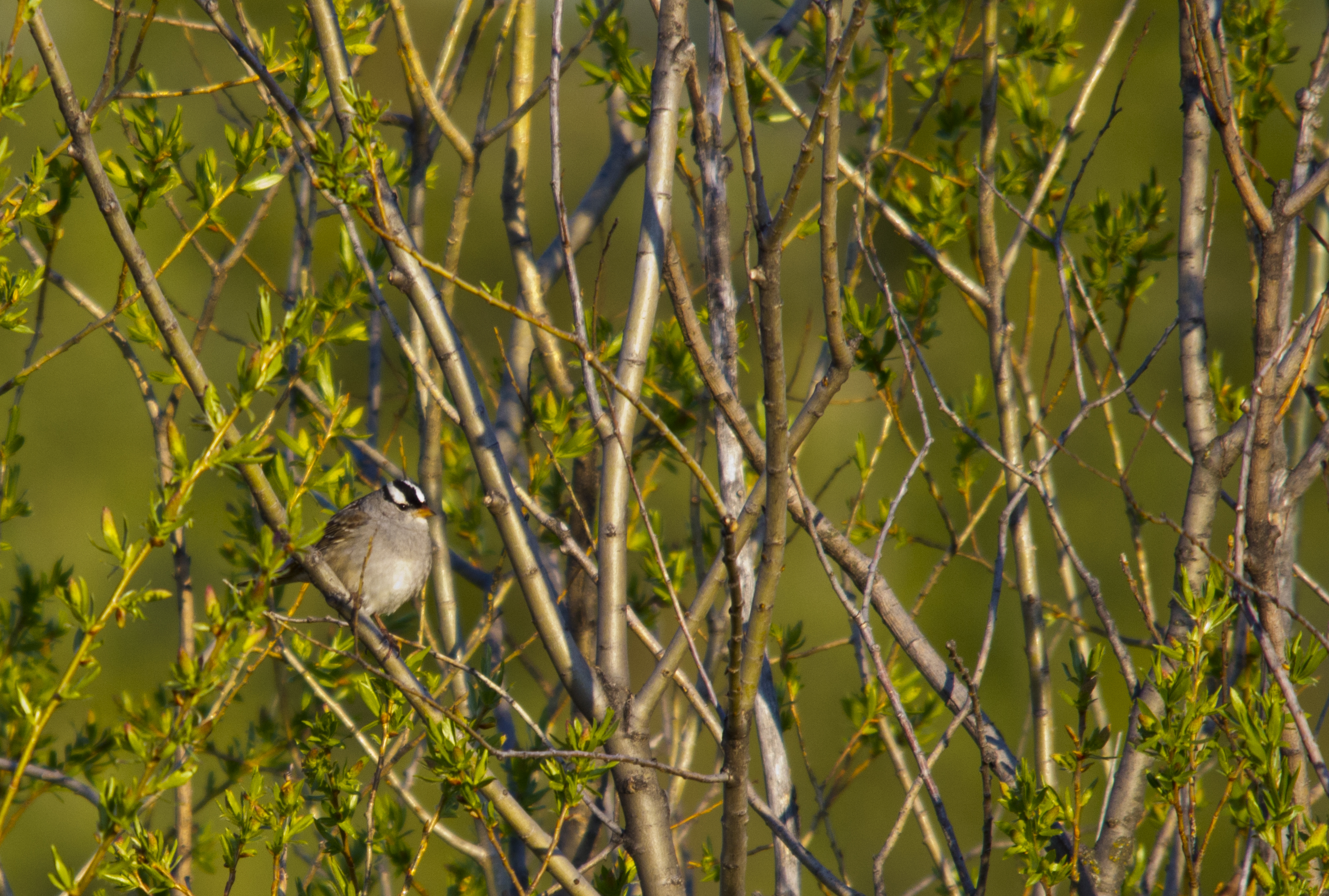
White-crowned Sparrow
On the river itself, a few Spotted Sandpipers searched for food along the shore, while a pair of Belted Kingfishers patrolled the river in search of small fish.
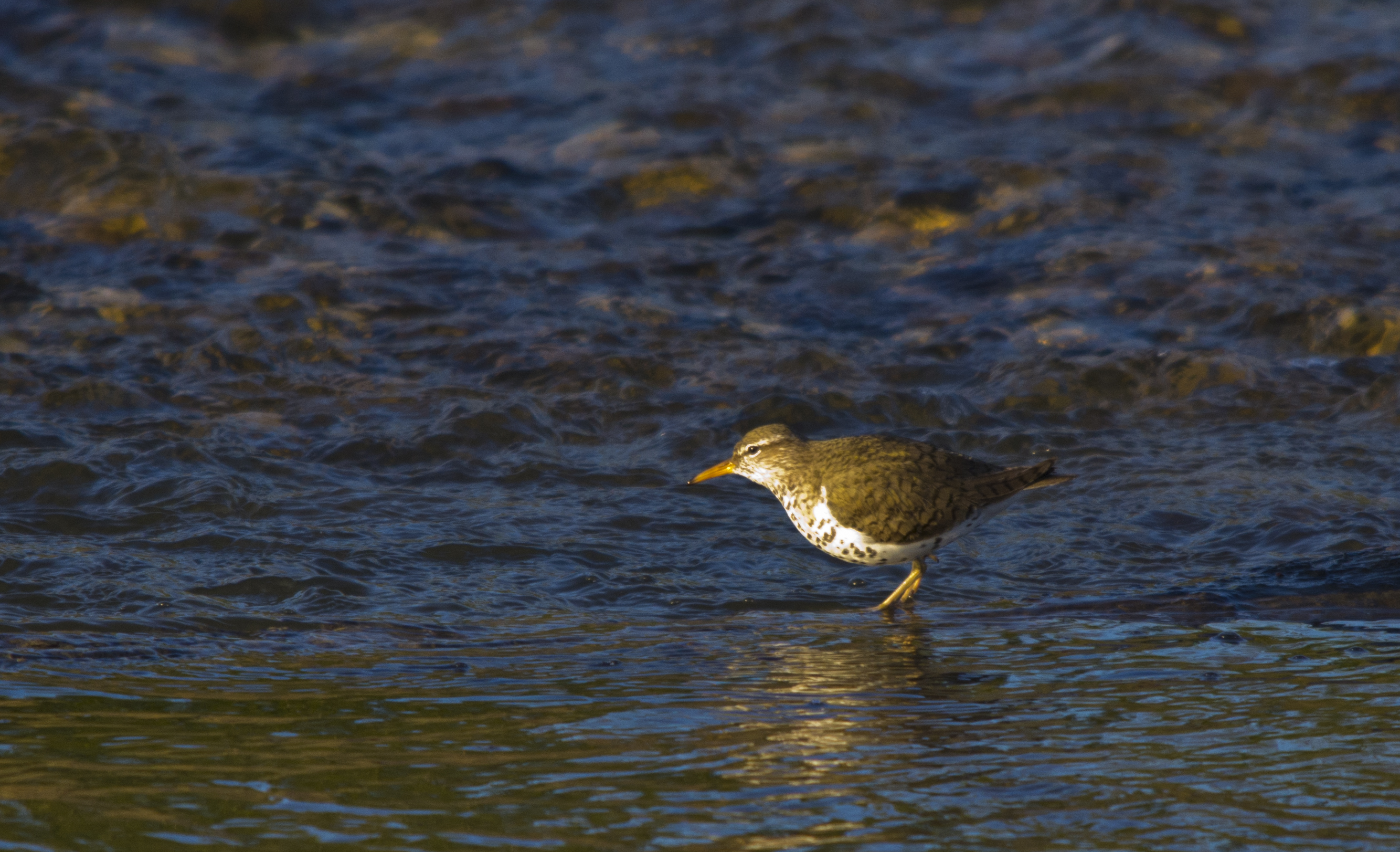
Spotted Sandpiper
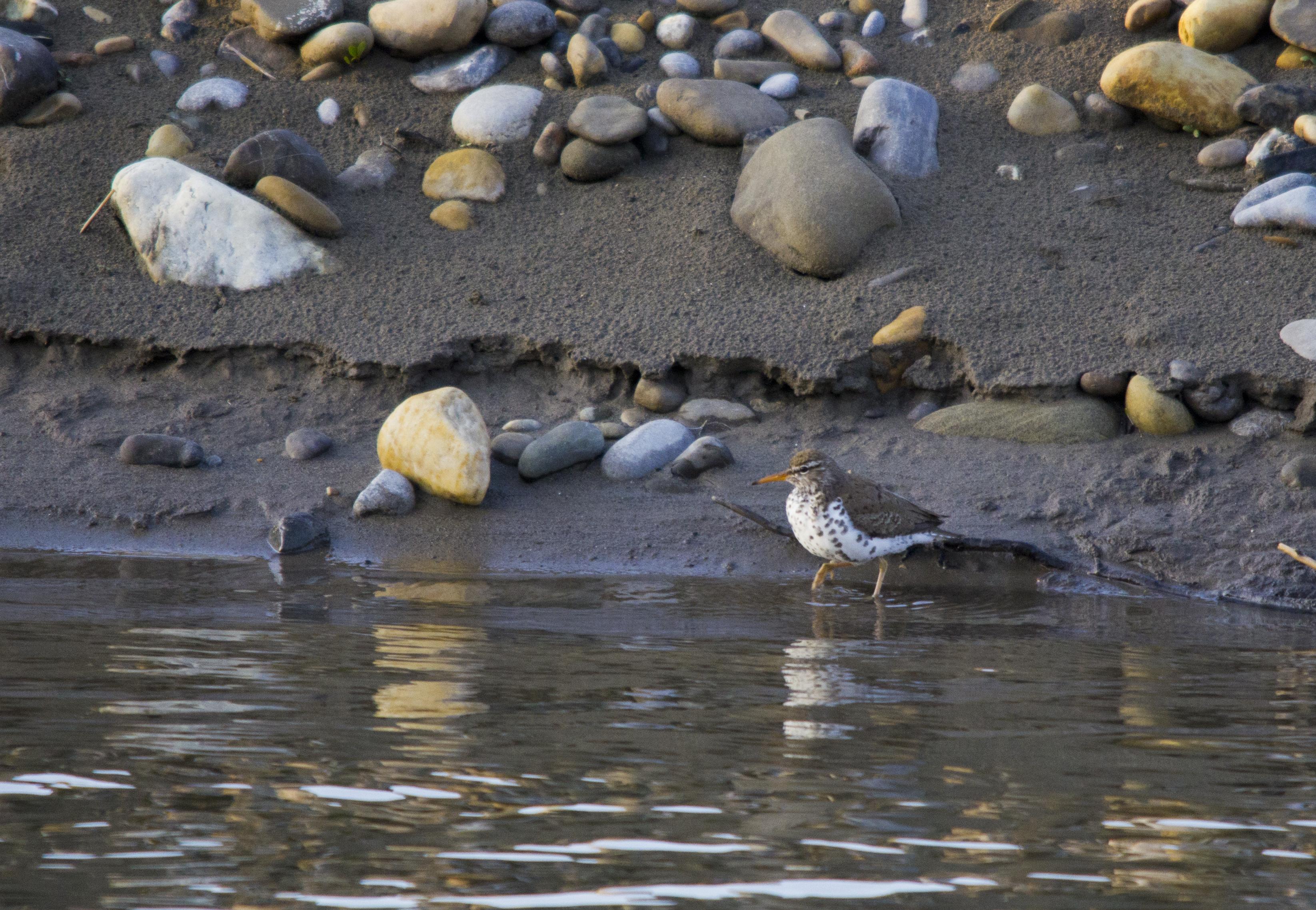
Spotted Sandpiper
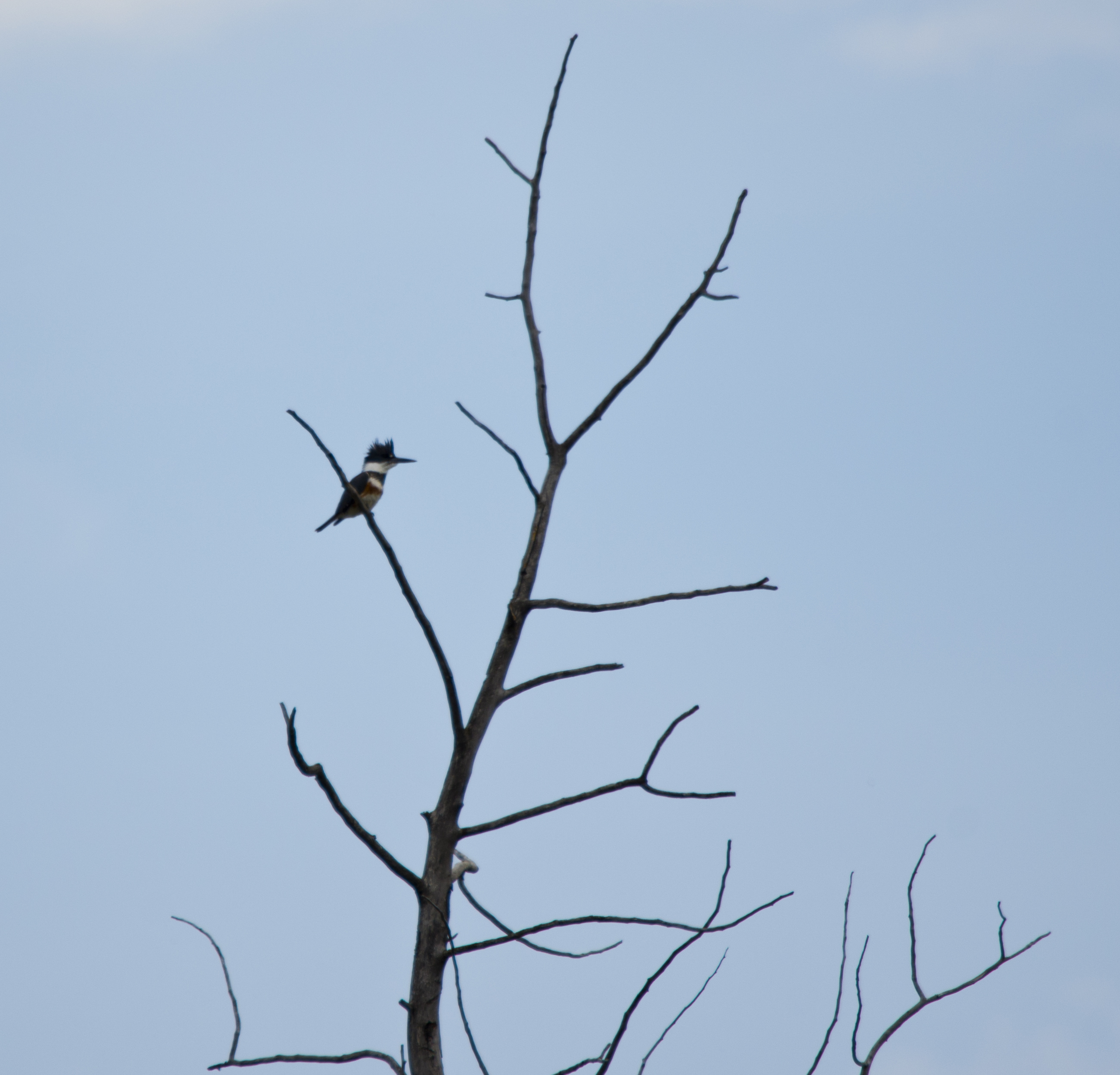
Belted Kingfisher
Further east, on the banks of the large eastern ponds, we had great views of an adult and a juvenile Red-naped Sapsucker, a House Wren at the entrance of a nest hole, and a Gray Catbird who flew in for a closer inspection as we played back a recorded call.
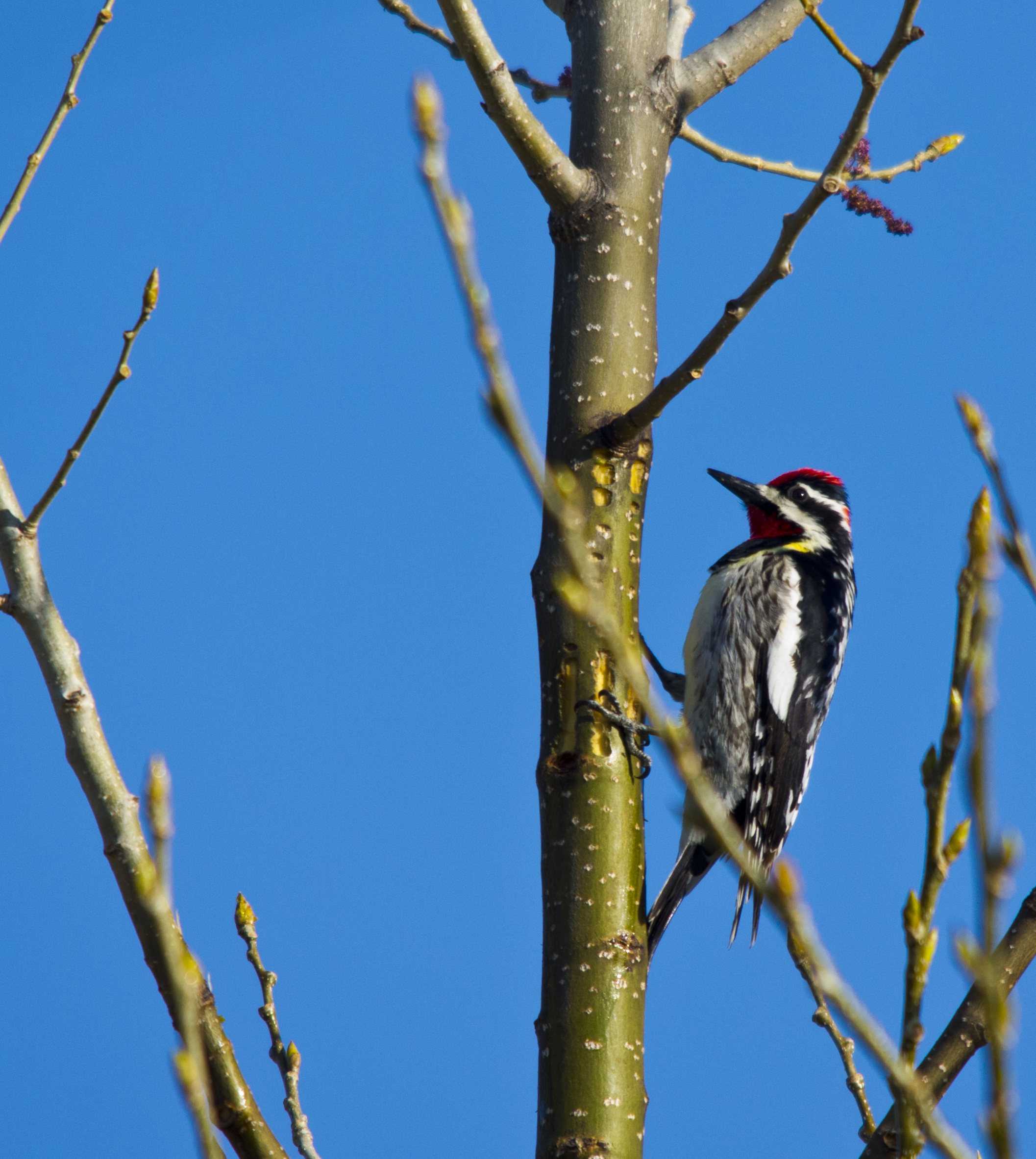
Red-naped Sapsucker
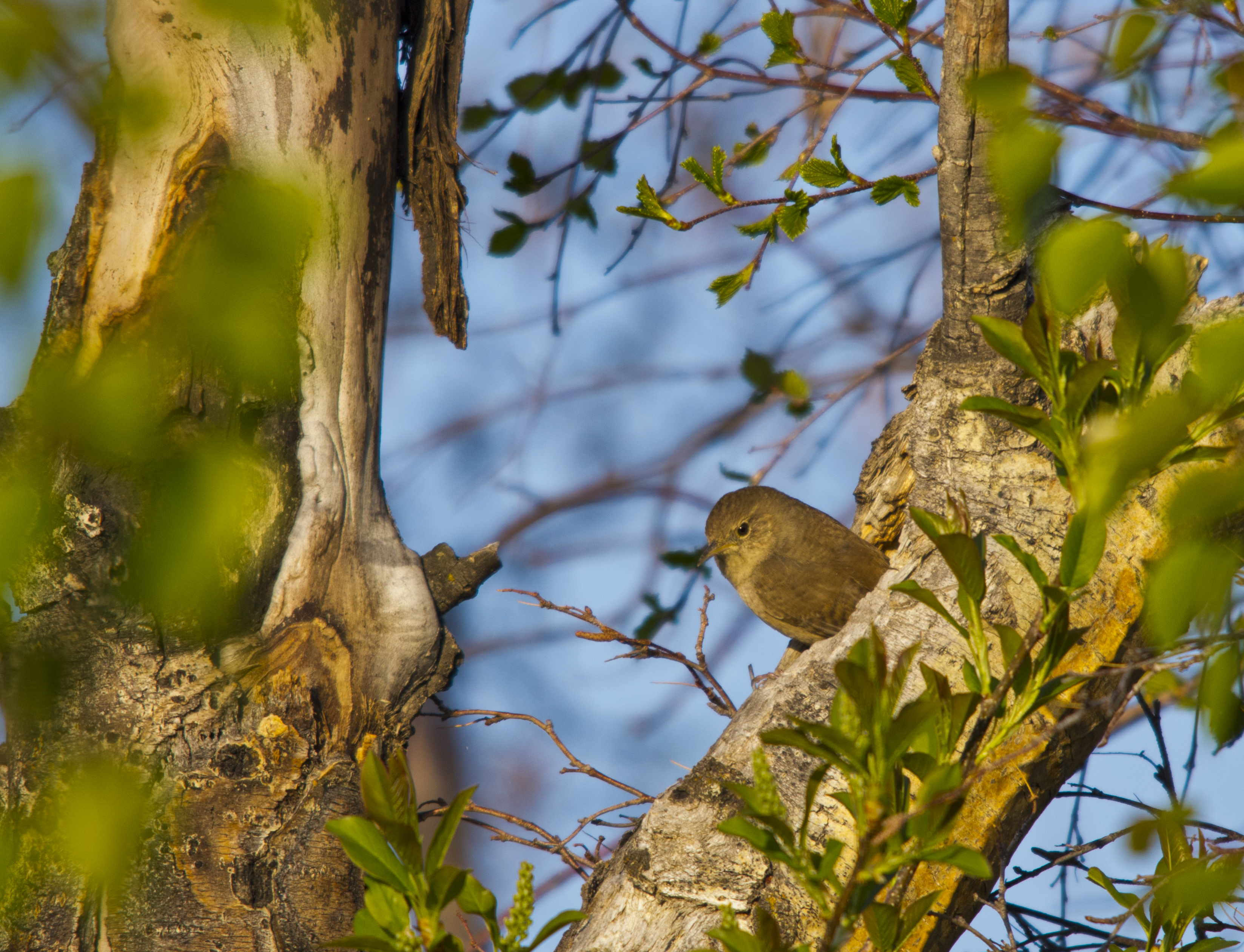
House Wren
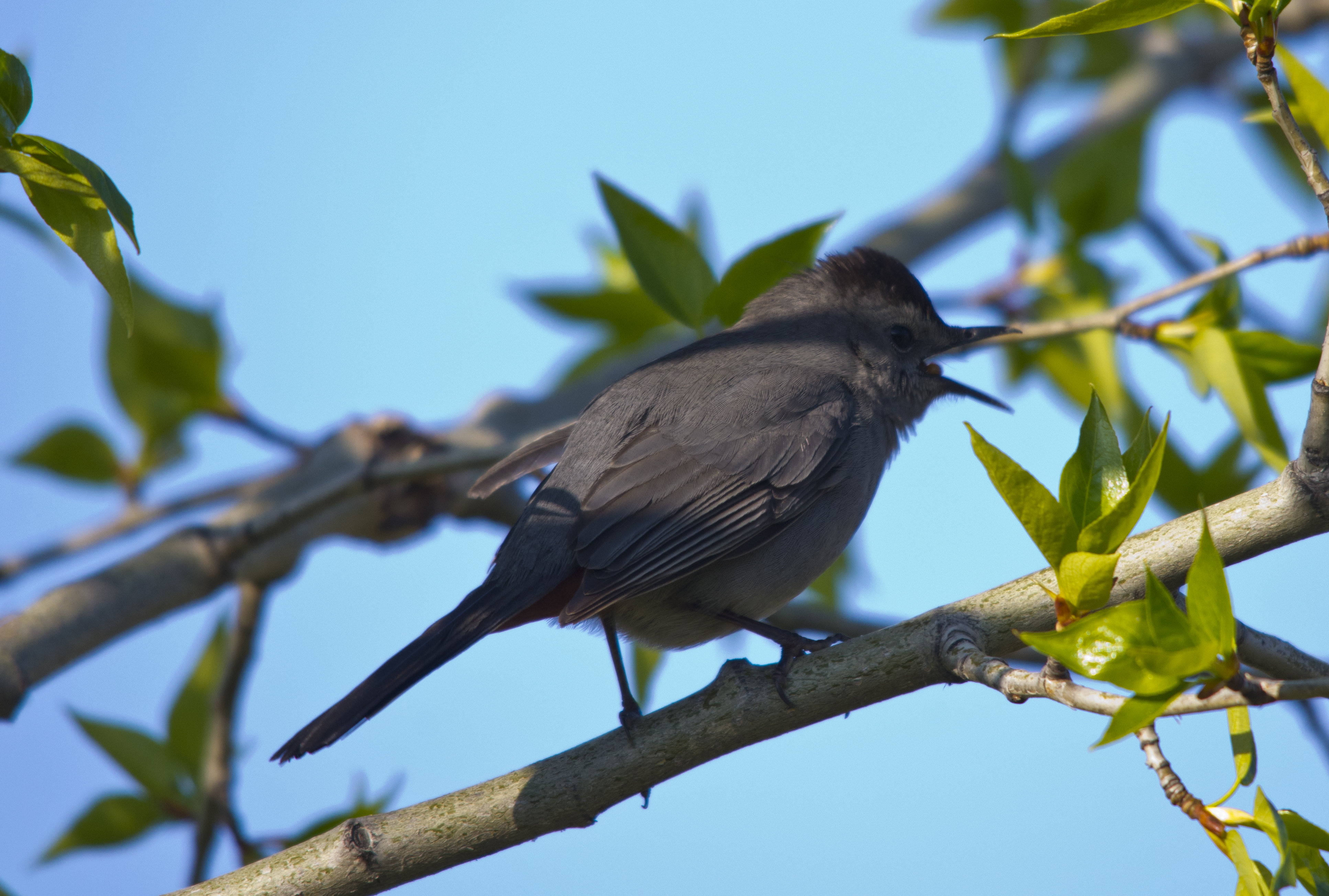
Gray Catbird
To top off those great views, we also spotted a pair of what we identified as Least Flycatchers along the edge of the ponds before they disappeared into the deeper brush.
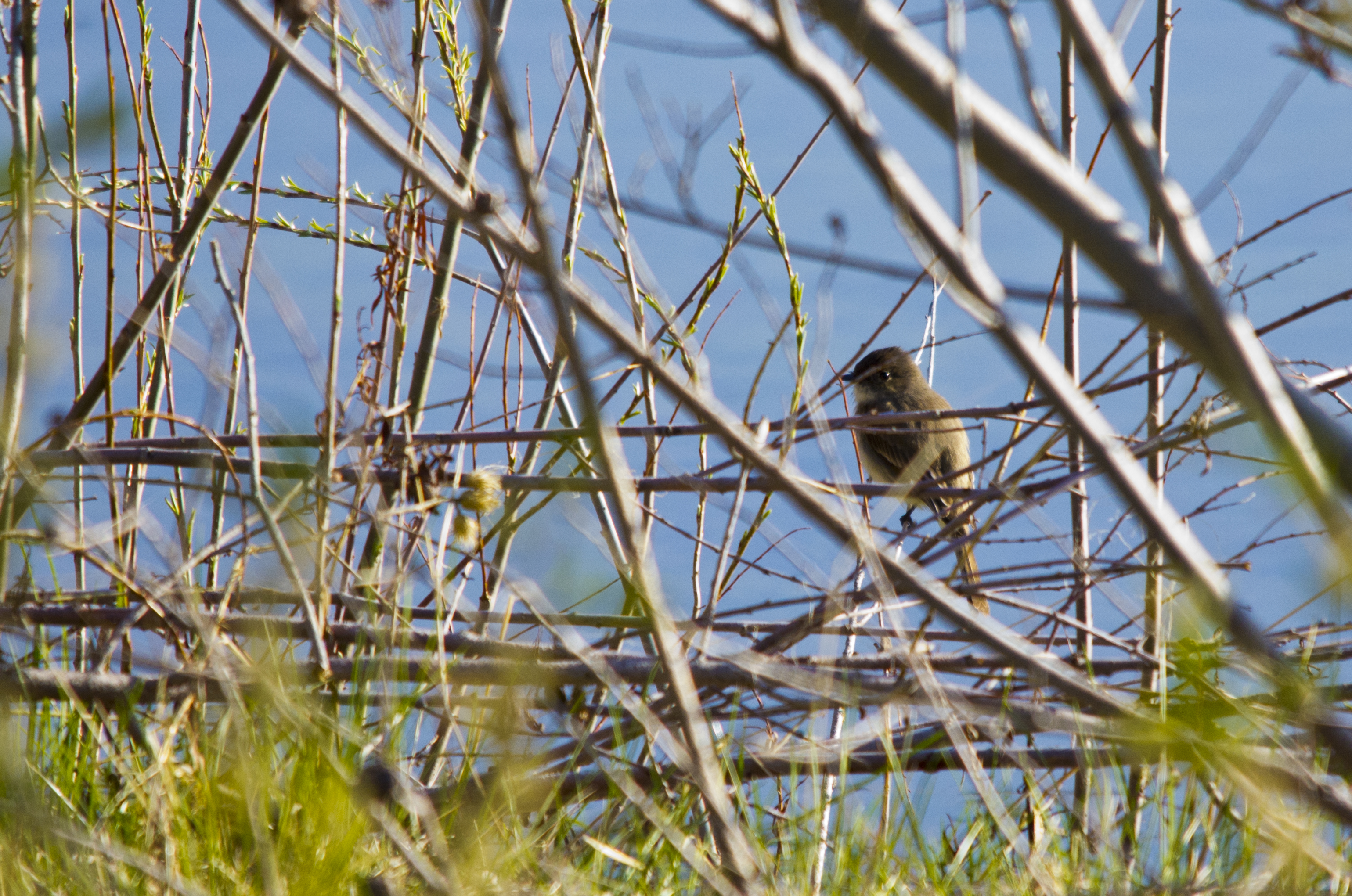
Least Flycatcher
We left the ponds after searching a bit longer for some other birds that we could hear nearby, but only the briefest glimpses confirmed the songs of the Yellow Warbler, Lincoln’s and Song Sparrows, and the ever present Clay-colored Sparrows buzzed in the background.
Turning back west, we continued past the parking lot and deeper into the spruce forest of Griffith Woods, which meanders through a number of small tributary channels of the Elbow River, very small ponds and wetland areas, but is dominated by the White Spruce that make up a significant portion of the foliage. The birds were heard more than seen, and while we heard a number of Pine Siskins, White-winged Crossbills, Boreal Chickadees, and both Hairy and Downy Woodpecker species, it was hard getting our binoculars on them, let alone the camera lens!
Coming to one of the first bridges, we saw a pair of sandpipers, which initially we thought were also Spotted Sandpipers, as before, but the white breast, greenish legs, and drastically different demeanor identified them as Solitary Sandpipers, which can sometimes nest in trees, as we noticed a few minutes after this shot was taken.
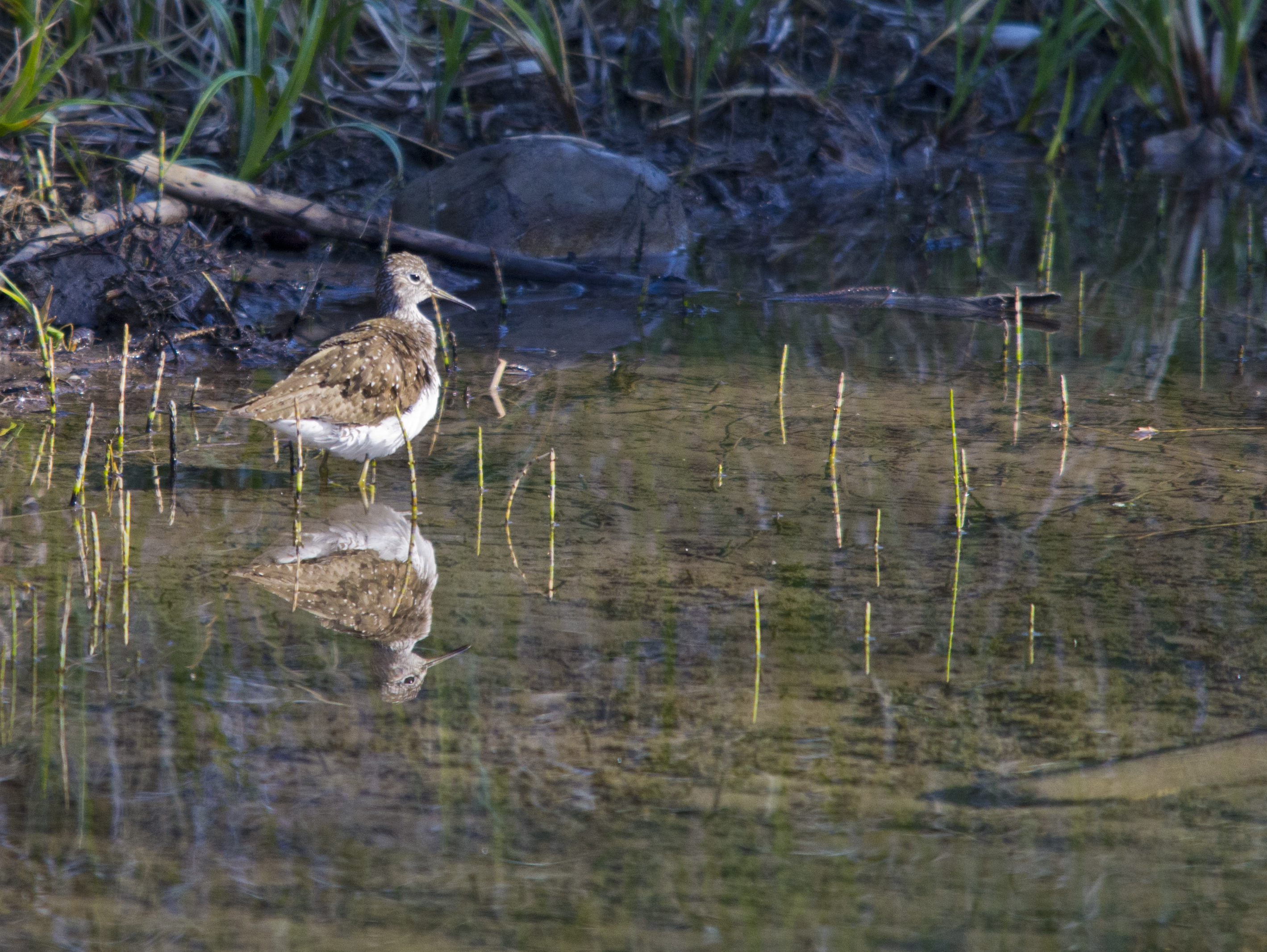
Solitary Sandpiper
We meandered for the next half hour with very few birds seen, but heard Chipping Sparrows, Ruby-crowned Kinglets, and what we thought was a flock of Black-capped Chickadees mobbing a predator, but turned out only to be an unusually vocal flock. A moment later, the call of the Audubon’s subspecies of Yellow-rumped Warbler was heard only a few meters away. Once again, we had great views of it as it was protective of its territory, indicating that it would very likely be breeding in the area if it can find a mate this season.
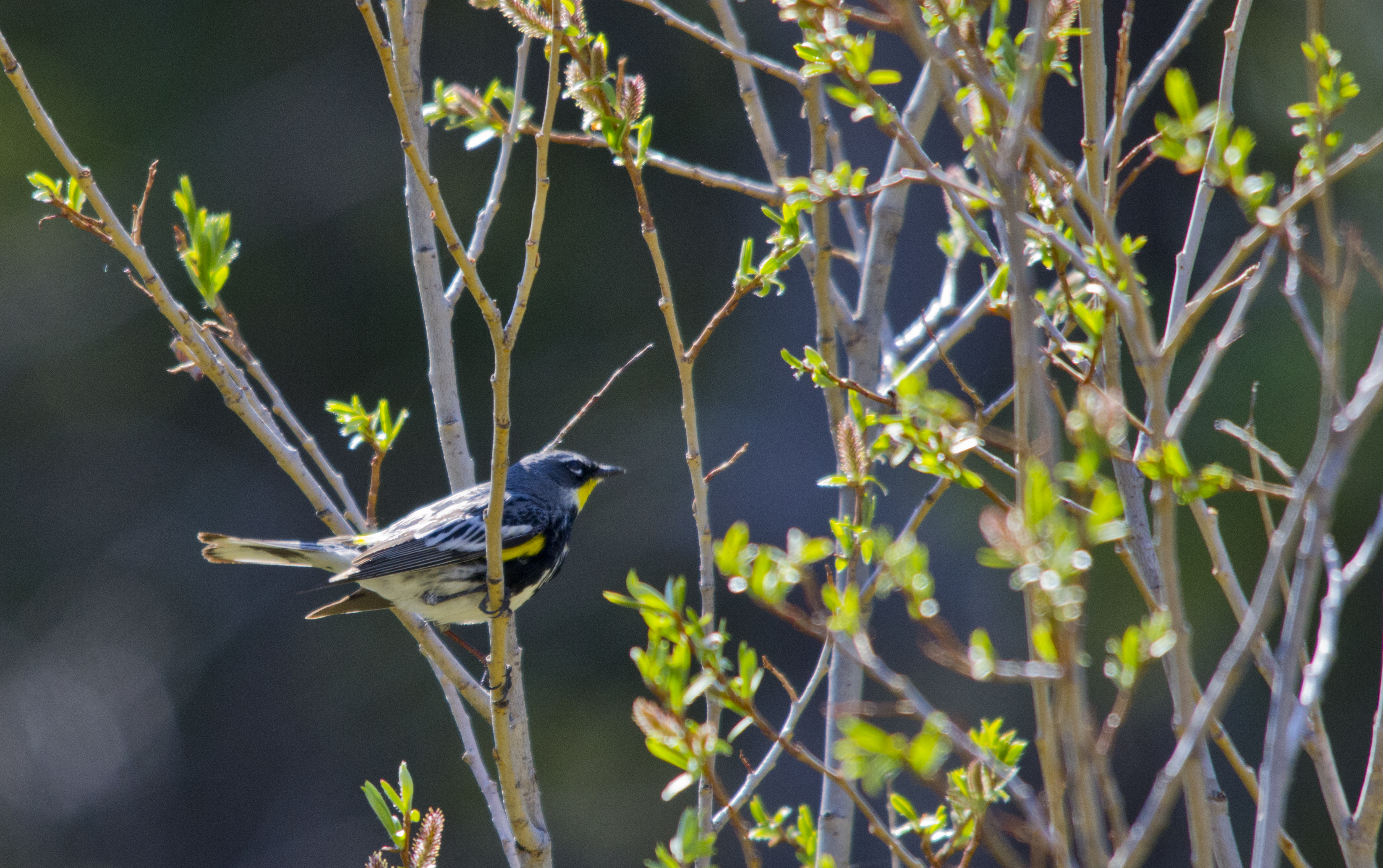
Yellow-rumped Warbler (Audubon’s subspecies)
Our last really great views were of the male Pileated Woodpecker that we originally saw back in March, once again protecting the nest hole in an abandoned power pole near the condominium complex.
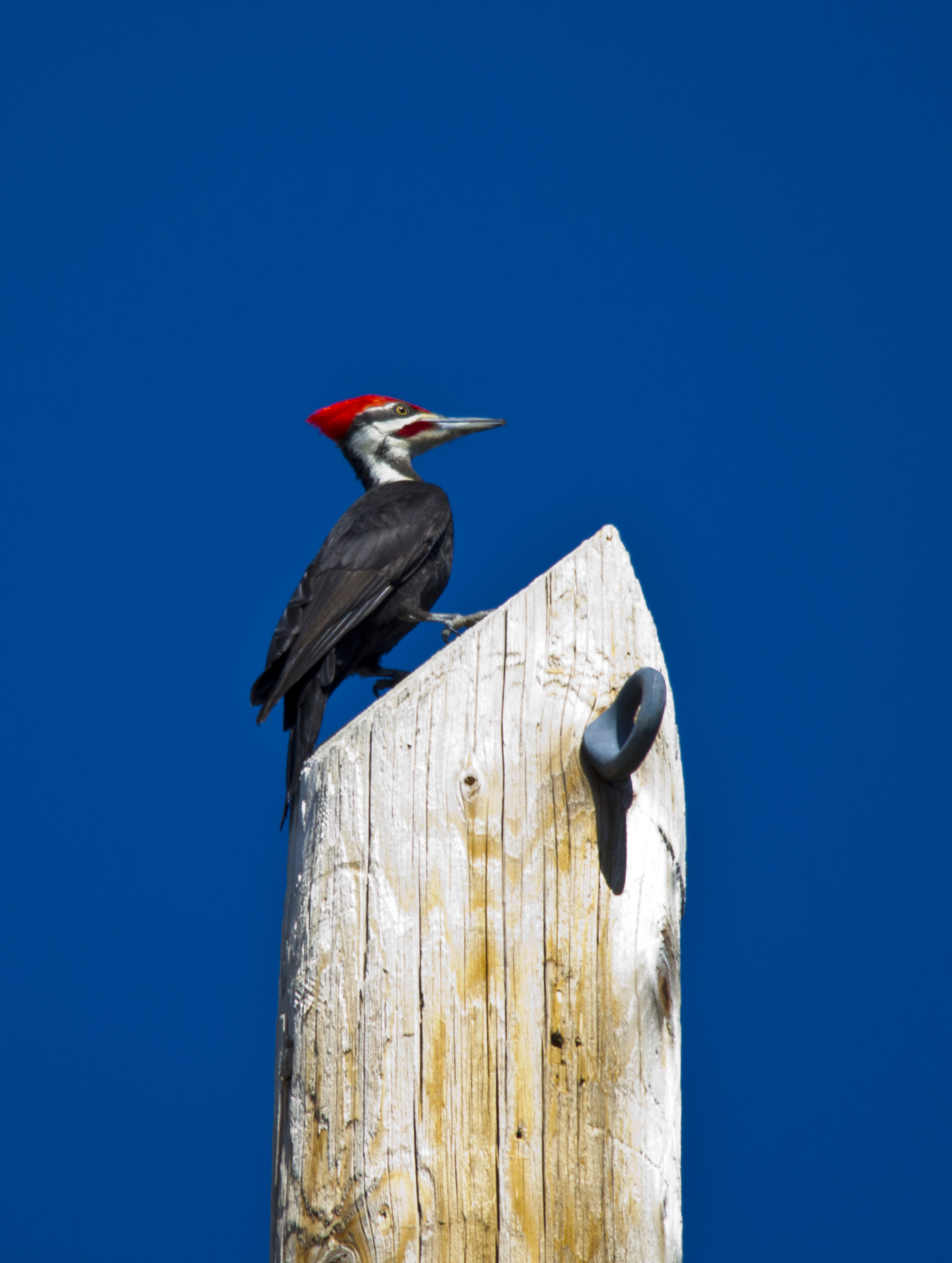
Pileated Woodpecker
On our way out, we did get one other new bird on the year in Calgary. High above us soared a juvenile Golden Eagle, with bright white patches under the wings, and that incredible golden brown hue over the rest of its body. While my camera couldn’t quite zoom in far enough to get a decent shot of it, my binoculars gave me good enough views that I’m looking forward to getting back out into the country to see these birds up close again. As for Griffith Woods, I look forward to exploring it once again this summer, and into the fall once the warblers begin heading south once again.
